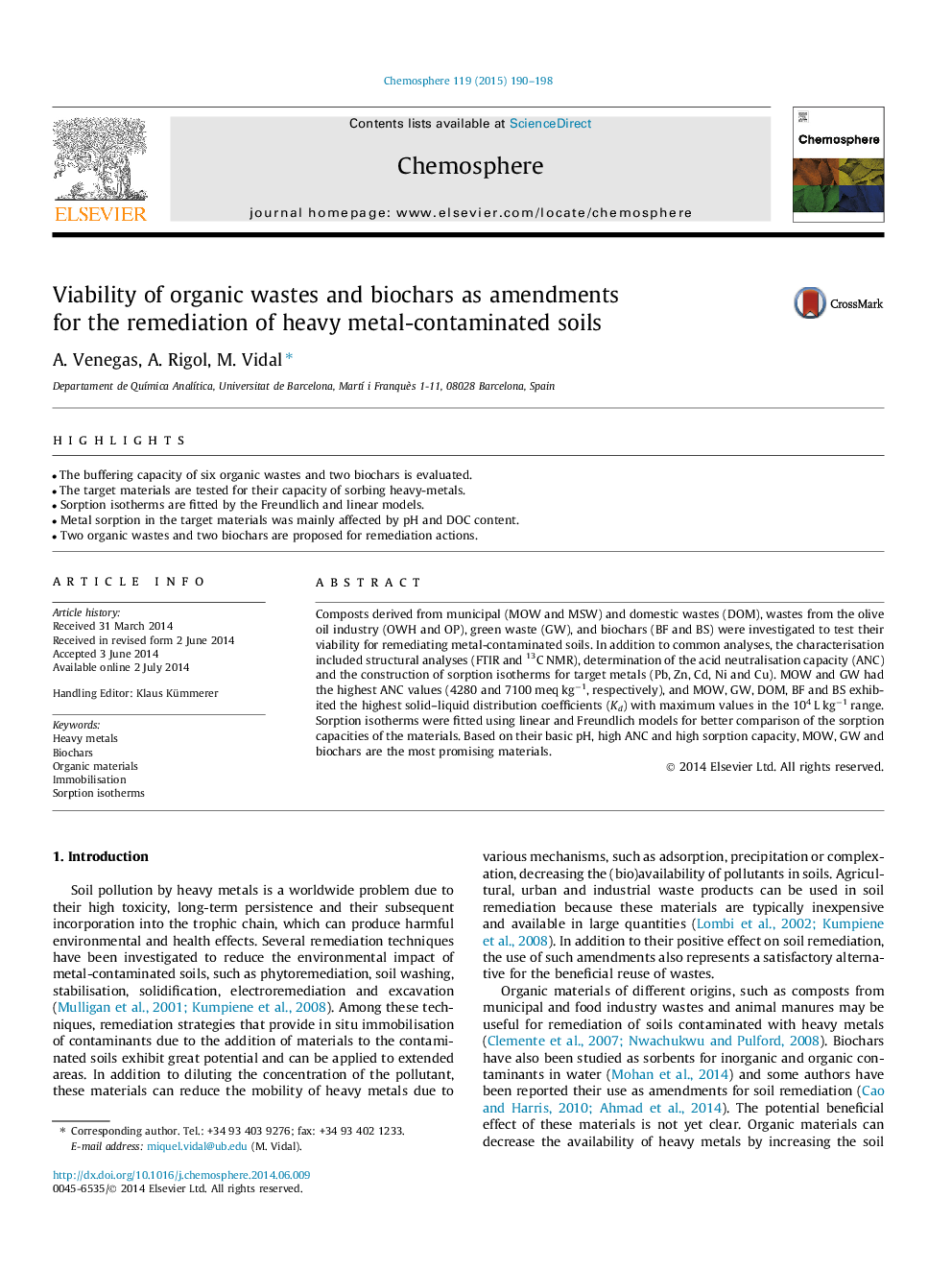| کد مقاله | کد نشریه | سال انتشار | مقاله انگلیسی | نسخه تمام متن |
|---|---|---|---|---|
| 4408620 | 1618852 | 2015 | 9 صفحه PDF | دانلود رایگان |
• The buffering capacity of six organic wastes and two biochars is evaluated.
• The target materials are tested for their capacity of sorbing heavy-metals.
• Sorption isotherms are fitted by the Freundlich and linear models.
• Metal sorption in the target materials was mainly affected by pH and DOC content.
• Two organic wastes and two biochars are proposed for remediation actions.
Composts derived from municipal (MOW and MSW) and domestic wastes (DOM), wastes from the olive oil industry (OWH and OP), green waste (GW), and biochars (BF and BS) were investigated to test their viability for remediating metal-contaminated soils. In addition to common analyses, the characterisation included structural analyses (FTIR and 13C NMR), determination of the acid neutralisation capacity (ANC) and the construction of sorption isotherms for target metals (Pb, Zn, Cd, Ni and Cu). MOW and GW had the highest ANC values (4280 and 7100 meq kg−1, respectively), and MOW, GW, DOM, BF and BS exhibited the highest solid–liquid distribution coefficients (Kd) with maximum values in the 104 L kg−1 range. Sorption isotherms were fitted using linear and Freundlich models for better comparison of the sorption capacities of the materials. Based on their basic pH, high ANC and high sorption capacity, MOW, GW and biochars are the most promising materials.
Journal: Chemosphere - Volume 119, January 2015, Pages 190–198
